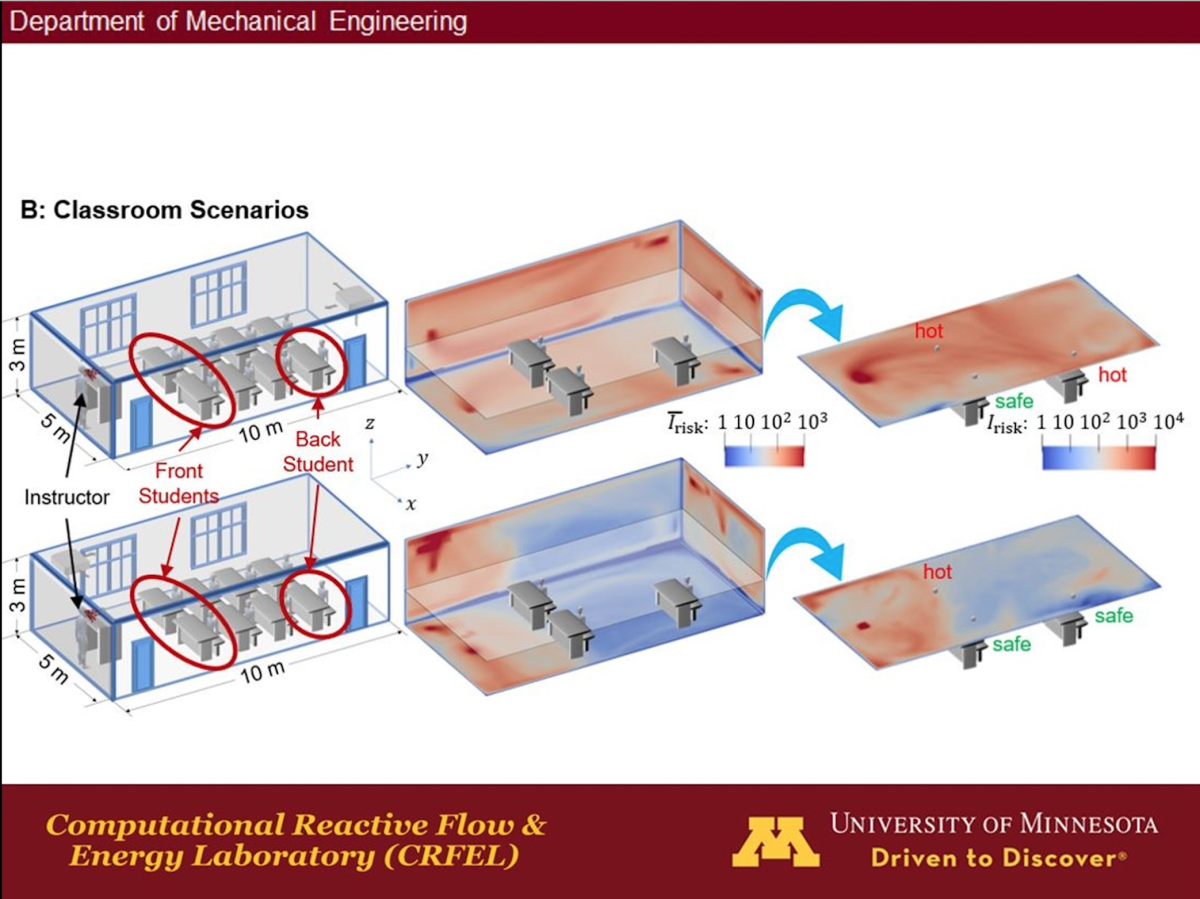ME Faculty Study How COVID-19 Spreads Indoors

ME faculty members Jiarong Hong and Suo Yang are researching how COVID-19 particles float in indoor settings, hoping to answer questions about how the virus spreads in different spaces. Hong and Yang received two grants to study how aerosols spread indoors through speaking and breathing. Their research shows how ventilation and location impacts the risk of virus transmission.
Their study included looking at elevators, small classrooms, and grocery stores, finding that 98% of aerosol particles are still present after 50 minutes of an instructor lecturing in a classroom. This helps inform how to ventilate spaces to avoid hot spots.
"There are a lot of practical guidelines we can derive from this research, and one important thing is...we need to actually optimize how we ventilate," said Hong. "So in the classroom setting with just ventilating air from one particular location, that is not very efficient."
Up next: the team will work with the Minnesota Orchestra to study how airflow moves through instruments and in concert halls to improve ventilation and minimize risks for players and concertgoers. They also plan to study restaurants and other common indoor settings.